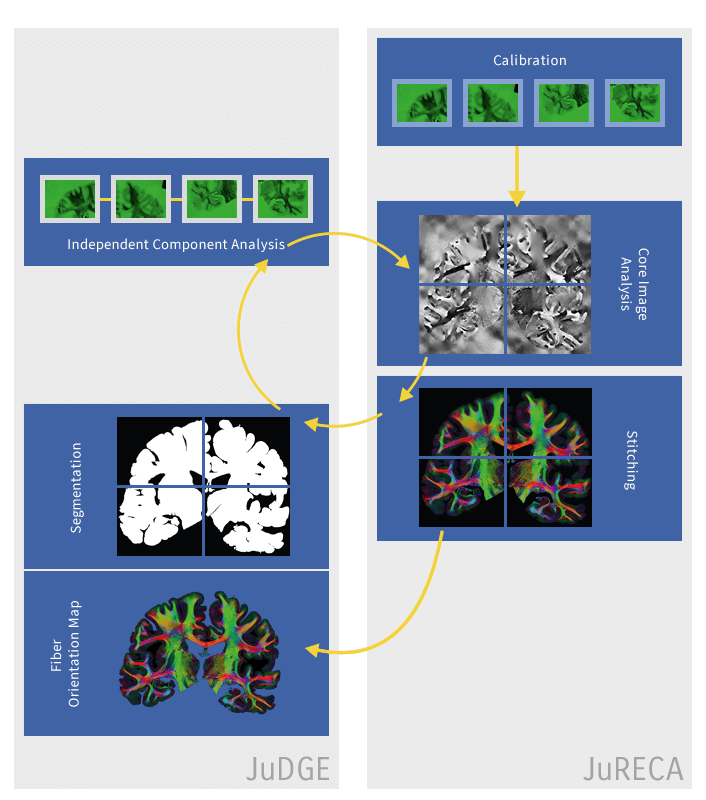On the trail of brain-fibers
Use UNICORE to automate processes
High-resolution three-dimensional polarized light imaging (3D-PLI) is an approach pursued by the Institute of Neuroscience and Medicine at the Forschungszentrum Jülich to create a detailed, three-dimensional map of nerve fibres of the human brain. Scientists strive to reach an understanding of the connectivity of the human brain as well as to study neurodegenerative diseases. In the 3D-PLI approach post-mortem brains are cut in thin slices (about 1500 slices, each 70 micron thick) and imaged with a microscope device using polarized light.
The images of brain slices are processed with a chain of tools for calibration, independent component analysis, enhanced analysis, stitching and segmentation. These tools have been integrated in a UNICORE workflow, exploiting many of the workflow system features, such as control structures and human interaction. Prior to the introduction of the UNICORE workflow system, the tools involved were run manually by their respective developers. Thus, once one step in the process was finished, the developer of the next tool in the chain would retrieve the data and run his tools on the output of the former. This manual approach led to delays in the entire process.

© Forschungszentrum Jülich
The UNICORE workflow system makes this approach almost fully automated and thus reduces the makespan of the entire workflow to hours rather than weeks. The results are easier to reproduce and the operation failures have been minimized, as fewer manual steps are involved. Only the automated approach will allow for the timely analysis of a large number of brain slices that are expected to be available in the near future.
